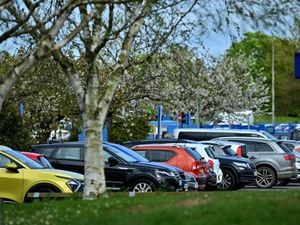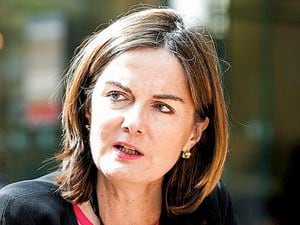Future Fit: Ambulance and hospital experts support controversial decision
Hospital and ambulance staff have come out in support of this week's Future Fit decision on healthcare in the county.
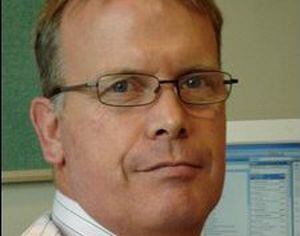
The man in charge of the Future Fit travel and transport group has said ambulance services agreed with the decision for emergency care to be sited in Shrewsbury.
Barry Thurston, independent chairman of the group said: “We now know that, in the future, most people from across Shropshire, Telford & Wrekin and Mid Wales will be taken by ambulance to the Royal Shrewsbury Hospital where the emergency department will be situated.
“Both the West Midlands and Welsh Ambulance Services are supportive of this decision.
“They believe it will improve the flow of their ambulances, allowing them to more quickly transfer patients to the care of doctors and get back on the road to reach the next emergency.”
He pointed out that the change did mean some patients would have to travel further in an ambulance, but said it was important to stress that both ambulance services were already driving some patients from across Shropshire, Telford & Wrekin and Mid Wales to hospitals out of the county.
He added: “What’s more important is how long it takes for an ambulance to reach someone needing assistance and who is on board when it arrives.
“We are very fortunate that the West Midlands Ambulance Service is one of the only ambulance services across the country that has paramedics on board all of its vehicles. Many people don’t realise how highly skilled and trained paramedics are.
“If necessary, they provide emergency treatment in order to stabilise a patient and will decide on the best place for people to go to receive the right treatment.”
“This may mean taking people to the nearest trauma unit, which will now remain at Shrewsbury, or, for the most severely injured people, taking them to a major trauma centre out of county, such as Stoke or Birmingham."
Both ambulance services have been involved in developing the proposed changes since the outset. and have been active members of the travel and transport group.
They will continue to work with both clinical commissioning groups and Sath as plans develop over the coming years.
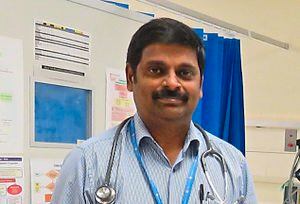
Subramanian Kumaran, clinical director of emergency services at The Shrewsbury and Telford Hospital NHS Trust, said: “Many of the people who currently attend our A&Es don’t need ‘emergency’ care – what they actually require is urgent care.
"Urgent care is care for illnesses and injuries that are not life- or limb-threatening but require urgent attention - things like simple breaks, minor burns, cuts and minor illnesses. As part of the reconfiguration, new 24/7 urgent care centres would be based at both hospitals, staffed by highly-skilled senior health professionals who are trained to deliver urgent care for adults and children.
"This means that, in the future, a high percentage of patients will continue to go to the same hospital as they do now for emergency or urgent care. The stark reality is if we don’t do anything to resolve the issues we face currently with our emergency departments, patients will come to harm.
"If things don’t change we won’t be able to staff our A&Es. As our staff retire or leave, we will struggle to replace them because of the simple fact – consultants don’t find working in small A&E departments across split-sites as attractive.
"The modernisation of our A&E departments has been our long-term ambition and is not a decision forced upon us in haste.”
"This is to address the continuing national and international developments in delivery of emergency care and will have the added advantage of making Sath a more attractive place to come to as an experienced doctor and consultant.
"But more than that, these plans are to ensure that our patients have the best access to the best medical staff in the right place when required.”
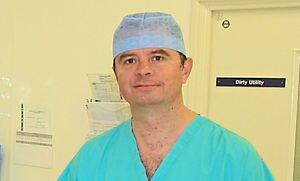
Mark Cheetham, colorectal and general surgeon and scheduled care group medical director, said: “There has been a lot of talk about the emergency centre in these new plans but, in fact, the majority of the care we provide at Sath is planned care - things like planned operations, endoscopy and diagnostics.
"Having a single planned care site will mean patients will not have to wait as long for their operation. Beds at the planned care site would be protected for planned operations.
"This greatly reduces chances of an operation being cancelled because a bed is unavailable due to a patient being admitted in an emergency.
"This is currently happening across our two hospitals. Over the past year, around 500 people had their operation cancelled on the day.
"Should any complications arise, the patient would be stabilised and then quickly and safely transferred to the emergency department.
"However, all patients would be screened prior to their operation to ensure that there are no clinical reasons why they could not have surgery on the planned care site.
"Any patient who for clinical reasons was classed as high risk would have their surgery at the emergency care site.”

Andrew Tapp, women and children’s care group medical director, said: “Under the reconfiguration, all women and children’s consultant-led inpatient services would take place at the emergency care site.
"This includes consultant-led maternity and neonatal services; the children’s ward with the children’s assessment unit, children’s surgery and children’s cancer and haematology treatments.
"The West Midlands Clinical Senate (expert clinical leaders who provide independent advice and guidance) recommended women and children’s inpatient services should be located on the same site as the emergency centre so all the expert help and assistance needed from many other specialities is immediately available to our patients when they most need it. However, most women and children would still receive care and treatment in the same place as they do now as most of our patients’ visits do not require a hospital admission.
"Women and children’s services available at both sites include midwife-led units (MLUs), including low-risk births and postnatal care; maternity outpatients, including antenatal appointments and scanning; gynaecology outpatient appointments; Early Pregnancy Assessment Service (EPAS); children’s outpatient appointments and neonatal outpatient appointments.
"These changes will affect some of our families where an admission is needed, but the closeness of a hospital has to be balanced with the comprehensive care that the hospital can deliver. We will endeavour to deliver as much care as possible close to home, working in partnership with the Clinical Commissioning Groups.
"There has been a lot of talk about the cost of building the relatively new Women and Children’s Centre at Princess Royal Hospital when we moved in 2014 because of the quality and sustainability of the facilities at RSH, but it is important to recognise that hospital buildings can be adapted very easily to other uses and the facilities that are within the Women and Children’s Centre offer great opportunities to the delivery of planned care.”

